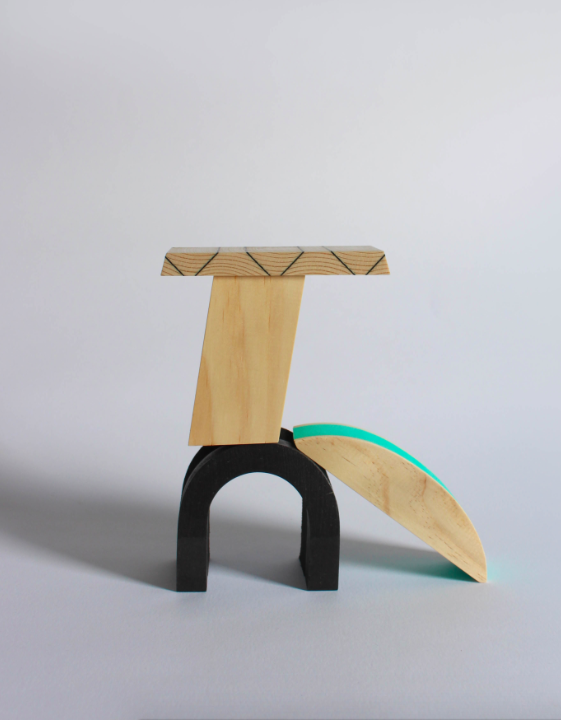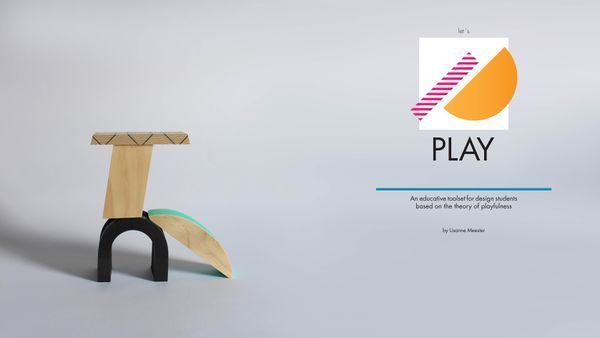Difference between revisions of "Let's PLAY"
| (3 intermediate revisions by 2 users not shown) | |||
| Line 3: | Line 3: | ||
|Image=Let's_PLAY_Lisanne_Meester2.png | |Image=Let's_PLAY_Lisanne_Meester2.png | ||
|Caption=Let's PLAY | |Caption=Let's PLAY | ||
| − | |Summary= | + | |Summary=<small>A project by Lisanne Meester</small> |
| − | <small>A project by Lisanne Meester</small> | ||
From my interest for playfulness as a method and my experiences with design education I started a more thorough research into these topics. I decided to search for a way to use this playfulness as a tool for design students for the moments they get stuck, to in the end enable them to become the creative thinkers we need nowadays. | From my interest for playfulness as a method and my experiences with design education I started a more thorough research into these topics. I decided to search for a way to use this playfulness as a tool for design students for the moments they get stuck, to in the end enable them to become the creative thinkers we need nowadays. | ||
This lead to the following research question: How can playfulness be a tool for design students at moments of feeling blocked in creating? | This lead to the following research question: How can playfulness be a tool for design students at moments of feeling blocked in creating? | ||
| − | + | |Article=The answer to this question is as follows: Playfulness can be a tool for design students at moments of feeling blocked in creating by using the action of play. This conclusion mainly resulted from discovering there is a difference between play and playfulness. Play is an action and playfulness is an attitude. This attitude may well be one of the most important skills for designers to have, but along the way I realised it is something which must first be learned. This is exactly what I aim to use the action of play for. By letting students play I want them to naturally gain this attitude of playfulness. | |
| − | |Article= | ||
| − | The answer to this question is as follows: Playfulness can be a tool for design students at moments of feeling blocked in creating by using the action of play. This conclusion mainly resulted from discovering there is a difference between play and playfulness. Play is an action and playfulness is an attitude. This attitude may well be one of the most important skills for designers to have, but along the way I realised it is something which must first be learned. This is exactly what I aim to use the action of play for. By letting students play I want them to naturally gain this attitude of playfulness. | ||
The discoveries in this research eventually lead to the project 'Let's PLAY' | The discoveries in this research eventually lead to the project 'Let's PLAY' | ||
| Line 24: | Line 21: | ||
This complete package of objects, playground and challenges is a new tool for self-education, which connects to the current demand within design education and supports the importance of designers nowadays. By performing the action of play the user of this toolset will eventually adopt a very personal attitude of playfulness, an extremely powerful attitude for any designer to have. | This complete package of objects, playground and challenges is a new tool for self-education, which connects to the current demand within design education and supports the importance of designers nowadays. By performing the action of play the user of this toolset will eventually adopt a very personal attitude of playfulness, an extremely powerful attitude for any designer to have. | ||
| − | + | }} | |
| − | + | {{Links external | |
| + | |link=www.lisannemeester.nl | ||
| + | |displaytext=www.lisannemeester.nl | ||
| + | }} | ||
| + | {{Category selector | ||
| + | |Category=Sustainability | ||
| + | }} | ||
| + | {{Category selector | ||
| + | |Category=Strategies | ||
}} | }} | ||
{{Articles more}} | {{Articles more}} | ||
| + | [[Category:WdKA Graduation Show 2017]] | ||
Latest revision as of 13:47, 6 April 2018
Contents
From my interest for playfulness as a method and my experiences with design education I started a more thorough research into these topics. I decided to search for a way to use this playfulness as a tool for design students for the moments they get stuck, to in the end enable them to become the creative thinkers we need nowadays.
This lead to the following research question: How can playfulness be a tool for design students at moments of feeling blocked in creating?The answer to this question is as follows: Playfulness can be a tool for design students at moments of feeling blocked in creating by using the action of play. This conclusion mainly resulted from discovering there is a difference between play and playfulness. Play is an action and playfulness is an attitude. This attitude may well be one of the most important skills for designers to have, but along the way I realised it is something which must first be learned. This is exactly what I aim to use the action of play for. By letting students play I want them to naturally gain this attitude of playfulness.
The discoveries in this research eventually lead to the project 'Let's PLAY'
The Project
Let's PLAY is an educative toolset for design students which can be used at moments of feeling blocked in creating. The action of play, accommodated by this toolbox, is specifically used outside of the design process. Stepping away from this captivating process and play for a moment will help students to loosen their mind and unconsciously gain creative insights they can then take back into their design process again.
The toolbox contains 18 carefully designed objects to play with. These objects will have the ultimate impact on the state of mind of design students in combination with the designed playground and given challenges, which are quite abstract, but do have a second design related layer.
This complete package of objects, playground and challenges is a new tool for self-education, which connects to the current demand within design education and supports the importance of designers nowadays. By performing the action of play the user of this toolset will eventually adopt a very personal attitude of playfulness, an extremely powerful attitude for any designer to have.Links
CONTRIBUTE
Feel free to contribute to Beyond Social.










